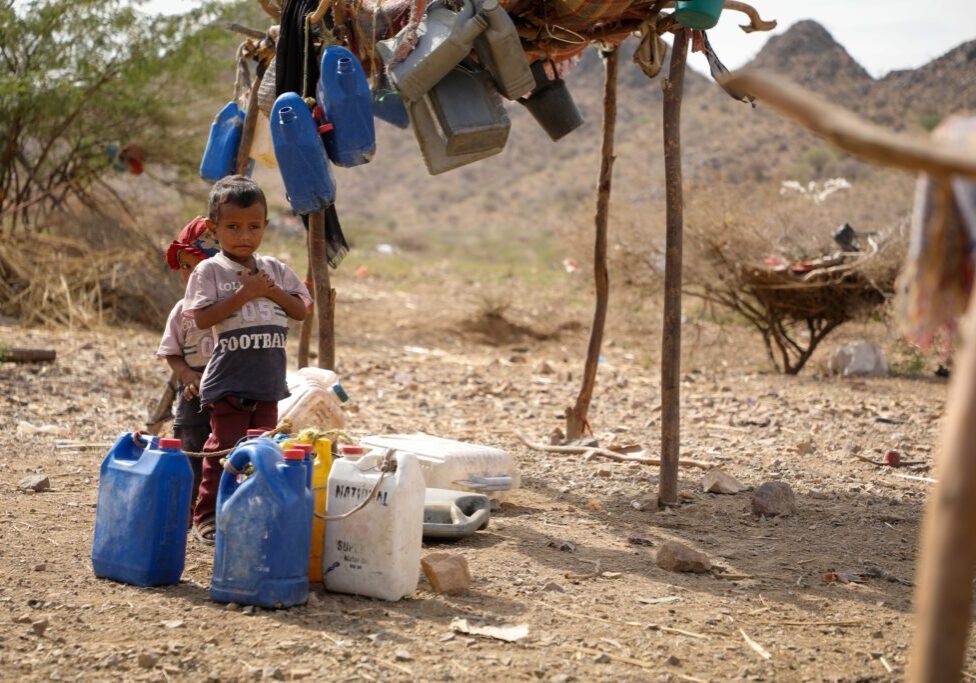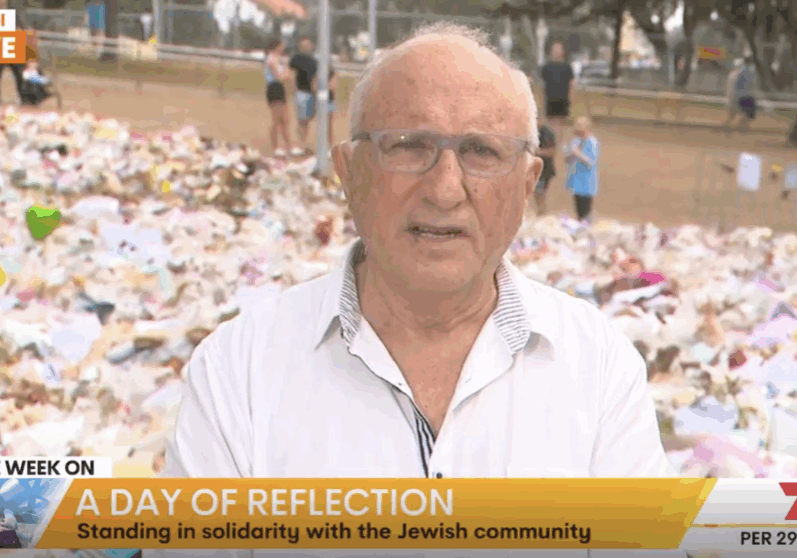FRESH AIR
West Bank building drops, but media spins it into surge
June 28, 2017 | Ahron Shapiro

In December 2014, I blogged about how the latest Israeli construction statistics in the West Bank at that time had been distorted in the news, revealing how clear data showing a drop in construction had been spun into a story claiming a “surge” based on a misleading interpretation of the data.
Now, it has happened again.
On June 19, Israel’s Central Bureau of Statistics issued its housing construction report for the first quarter of 2017. The statistics revealed that Israeli housing starts in the West Bank were down 59% in the first quarter of 2017 compared to Q4 2016 and 23% compared to Q1 2016.
(You can download images of AIJAC’s updated long-term database of West Bank settlement housing starts based on the CBS’ quarterly updates and annual totals here and here).
According to the report, 344 new homes were started in West Bank settlements in the quarter, compared with 477 in Q1 2106 and 839 in Q4 2016.
Yet not only housing starts dropped, but housing completions, down 34%, with 403 completions in Q1 2017 compared to 611 in Q1 2016.
This story made the front page of the Jerusalem Post, which reported the news accurately.
Yet, in reporting the same news item, the Times of Israel used an AFP story with only supplemental reporting by a TOI staffer. Their story had the misleading headline: “Israeli settlement building has risen, official data shows” and the subhead “West Bank construction increased by 70% in past year, while work in the rest of the country declined”.
How was the AFP story misleading? It used a much longer timeframe in order to spin the narrative on the latest data into a construction surge instead of a decline.
It’s true there was a 40% rise in construction in 2016 compared to 2015, during US President Barack Obama’s last year as president.
Yet this statistic isn’t really surprising when you consider how much pressure the Obama Administration had applied over the prior seven years for Israel to deter Israel from building any homes in the West Bank.
Yet, be that as it may, there are two things to consider: First, the amount of construction was more or less commensurate with the settlers’ percentage of Israel’s population. Secondly, housing completions lagged far behind the number of starts in the past couple of years.
As the Jerusalem Post reported:
Settler housing starts amounted to only 5% of the overall work that was begun on 52,400 homes nationwide in 2016.
When it came to housing finishes in 2016, the numbers rose nation wide by 4 percent over 2015, but dropped in Judea and Samaria by 14 percent.
The 1,760 settler homes that were completed in 2016 represented only 3.8% of the overall 45,400 finished units nation wide.
As of 2016, settlers make up around 4.6% of Israel’s population.
Furthermore, when housing starts rise but finishes drop over time, the logical conclusion would be that even where ground has been broken for a new settlement home, there seems to be some sort of work slowdown in effect, making the construction drag on longer than it should.
It’s also true that, if you cherry-picked a particular time frame – in this case April 2016 and March 2017, and you compare it to the same arbitrary 12-month period the previous year, you can make the construction increase appear as high as 70%.
Here’s a great example of journalistic “cherry picking” to get a desired story angle: On June 15, the Israeli left-wing daily Ha’aretz published an analysis of the settlements to coincide with the 50th anniversary of the Six Day War with the misleading subhead “Over the last 30 years, eight new settlements have been built”.
This is technically true, but highly misleading, because if Ha’aretz had chosen a 20-year time frame instead of 30 years, the number would be zero. Actually, more accurately, it would be minus 25 – Israel dismantled all 21 settlements in Gaza and four settlements in the northern West Bank in 2005 (see my recent blog about the much hyped new settlement being built near Shilo).
Returning to the case at hand, as stated above, the increase in housing starts between January 2016 and December 2016 – the ubiquitous Q1-Q4 annual timeframe – was 40%, much less sensational than 70%.
Yet it’s worthwhile to pause here to investigate what made the construction in 2016 spike even 40%?
It was a spate of second quarter construction in only a handful of settlements within the settlement blocs Israel is expected to keep through land swaps as part of any potential peace agreement. This was confirmed by a former activist for anti-settlement NGO Peace Now, by the way, as Ha’aretz reported on September 17, 2016.
Dror Etkes, a former Peace Now activist who researches construction policies in the territories, confirmed that most of the housing starts in recent months were in the settlement blocs.
Peace Now’s settlement spin
Speaking of Peace Now, the group – an NGO popular with the media with a long history of exaggerating the settlement issue – stretched the truth again on June 19, alleging in a Ha’aretz article on the same new CBS settlement data “that 70 percent of last year’s settlement housing starts were ‘in isolated settlements that Israel will have to evacuate as part of any peace settlement.'”
Yet this claim, unchallenged by the Ha’aretz reporter, is demonstrably false. In reality, the term “isolated” applies only to settlements east of the security barrier or proposed route of the barrier.
Yet according to the statistics quoted in Peace Now’s own internal report on settlement construction in 2016, only 474 out of 1814 starts – or just 26% – met this qualification.
So, where does Peace Now get the number 70% from? Evidently, this number is reached by comparing the location of the housing starts to the border proposed by the 2003 “Geneva Initiative”.
As I wrote in a blog in February, the Geneva Initiative is a far-left Israeli peace plan created in conjunction with a handful of Palestinians that has never been endorsed by the vast majority of Israelis and Palestinians or their leaders.
The Geneva Initiative lacks legitimacy, and Peace Now’s interpretation of what constitutes an isolated settlement or its determination of what settlements are likely to be evacuated in a future peace deal lacks credibility.
But what about all the new approvals and advancing of settlements we’ve been hearing about this year?
As the Jerusalem Post reported on June 20:
Israel has advanced or authorized more than 8,000 settlement homes [since late January], according to Defense Minister Avigdor Liberman.
That sharp increase in approvals has not had time to translate into action on the ground, however.
Simply put, approvals and authorisations do not translate into the same number of actual houses. As the blogger Elder of Ziyon pointed out in 2014, the approval process for constructing a home in a West Bank settlement is at least eight steps long. Each step is routinely reported by the media without any attempt to clarify whether it’s the final approval step. It usually isn’t.
Even if it is, will those proposed homes be built? Maybe. Maybe not.
As part of the same story on new construction figures, the Jerusalem Post reported on a visit by right-wing Jewish Home party leader Naftali Bennett to the West Bank settlement of Beit El, where he complained that 300 homes that were “approved” five years ago have yet to be built because Prime Minister Binyamin Netanyahu won’t give the necessary permission for ground to be broken on them.
Also on June 20, the Jerusalem Post cited an Army Radio report that Netanyahu had frozen construction on 6,000 homes in Jerusalem.
What really constitutes news – that is, the most recent development – is that the number of housing starts has dropped since the inauguration of US President Donald Trump in January, in spite of the fact that Israel has advanced plans for thousands of homes in the West Bank since Trump’s inauguration.
Similar to my earlier point about the discrepancy between starts and finishes – what we are witnessing here is the distinct difference between advancing the process for approving a settlement home proposal and actually building it.
So, what is really going on in the settlements?
Housing starts? Housing completions? All these statistics can become overwhelming.
What’s more useful is to survey the situation on the ground. When you do so, and take into account exactly where the housing has been built in recent years in relation to the number of settlements, you realise that only a handful of settlements have seen significant growth – mostly ultra-orthodox settlements just over the Green Line.
Meanwhile the other settlements are withering. A Reuters story from April 3, titled “As Israeli settlement growth slows, some drift away” observed:
Over the past two decades, the two main ultra-orthodox settlements, Beitar Illit and Modiin Illit, have grown from comprising about 10 percent of the West Bank settler population to making up nearly a third of it.
Also,
A decade ago, for every 1,000 settlers already living in occupied territory, 20 more arrived each year. Now the expansion rate is just six per 1,000.
Later in the story, it noted that settler children are leaving the settlements because they can’t find new houses close to home:
Itzik Fleger, a real-estate agent in Beit-El settlement, said the founding generation is beginning to get older, their children have grown up and some have moved away.
The situation in Beit El was expanded upon on June 23 in Ha’aretz in a column by Israel Harel – a settlement advocate and founder of the Council of Jewish Communities in Judea, Samaria and Gaza and head of the group until 1995. Harel described the effect of the defacto settlement freeze on the isolated settlement of Beit El.
Construction in Beit El ceased a decade ago. Five years later, at the instruction of the High Court of Justice, the Ulpana neighborhood in that community was demolished. In order to calm ruffled spirits Prime Minister Netanyahu promised to quickly build 300 new housing units there. Three years passed and nothing was built. Instead there were more demolitions, with the total destruction of the Dreinoff project buildings in that settlement.
In a combination strike-and-protest against the halt in construction, the Beit El council moved its activities to Jerusalem, setting up a protest tent. A significant number of cabinet ministers show up there, making promises and lending their support. However, these visits and the words expressed there are akin to words said when consoling the bereaved.
Beit El, founded 40 years ago, is not the only settlement in which construction has been halted. It is also not the only one in which this situation is threatening its existence. Many of the founders are over 70 years old. In the first years they and many others who joined them had space on which to erect their homes. However, since the settlement’s 30th anniversary it cannot even absorb its own sons and daughters. This has led to an ageing of the settlement, to closure of kindergarten classes and a school, and to doubt about the future. For a Palestinian state to be established in the region, Netanyahu need not make any concessions his voters object to – it’s enough to let these settlements die a natural death.
Harel notes it is not just isolated settlements that are experiencing this phenomenon, but settlements in the blocs as well.
A similar situation exists in Ma’aleh Adumim [a suburb of Jerusalem], a city within the national consensus. Up to a decade ago young families from Jerusalem moved there, mainly due to lower housing costs. This helped Jerusalem, where they continued to work, as well as, of course, the new city. Now with the halt in construction, the second and third generations have to leave. Due to the limited supply of housing, people who insist on remaining there have to pay prices that aren’t much different from those in Jerusalem. There too kindergarten classes are closing and the number of schoolchildren is declining.
The focus of Harel’s op-ed is actually an attack on Netanyahu for promising much to the settlement movement over the years and delivering little. This is something that is repeatedly expressed by many in the settlement movement. And the evidence indicates that this is not jut an ambit claim by settlers for more. Despite the appearance given in the media, the Netanyahu governments since his taking office in 2009, have been more restrained in slowing settlement growth than their predecessors.
This is backed by all statistical data. Since 2009, the settlements have accounted for an average of 3.72% of all new housing starts. However, settlers account for 4.6% of Israel’s population. By contrast, between the years 2000 and 2008 – the years before Netanyahu took office (going back to the earliest available Israeli statistical data online) – the settlements received an average of 5.85% of the annual housing starts country-wide. See here.
Conclusion
Statistics can be deceiving, especially, as I’ve shown, when time frames can be manipulated to serve a narrative.
While settlement housing construction figures may fluctuate, the reality on the ground is that settlements are not experiencing expansion even to allow for natural growth, and certainly not growing in any way, shape or form that would preclude the creation of a Palestinian state as part of a future peace deal.
Ahron Shapiro
Tags: Israel























